
|
JAPANESE PRINTS A MILLION QUESTIONS TWO MILLION MYSTERIES |
Ukiyo-e Prints浮世絵版画Port Townsend, Washington |
|
A CLICKABLE INDEX/GLOSSARY (Hopefully this will be an ever changing and growing list.)
Ro thru Seigle |
|
|
The bird on the walnut on a yellow ground is being used to mark additions made in July 2008. |
|
|
|
TERMS FOUND ON THIS PAGE:
Rōnin,Teddy Roosevelt, Rorschach test, Rosoku-tate Russo-Japanese War, Sagi musume, Saikaku, Saint Catherine of Alexandria, Saint Jerome, Saint Lawrence, Sajiki, Sakaki, Sakura, Samegawa, Sanemori Monogatari, Sangi, Sango, Santo Kyoden, Sanzu no kawa, Saru, Sasa, Sasabeni, Sasa rindō, Sawamura Gennosuke II, Sawamura Sojurō IV, Sawamura Sojurō V, Sawamura Tanosuke II, Sayagata, Dean J. Schwaab, Arnold Schwarzenegger, Sedai, Segawa Kikunojō V, Seigaiha and Cecilia Segawa Seigle
ろくろ首, 浪人, 蝋燭立て, 日露戦争, 鷺娘, 犀角, 桟敷, 榊, 桜, 鮫皮, 実盛物語, 算木, 珊瑚, 山東京伝, 三途の川, 猿, 笹, 笹紅, 笹竜胆, 沢村源之助, 沢村宗十郎, 澤村田之助, 紗綾形, 世代, 瀬川菊之丞 and 青海波
ろくろくび, ろうにん, ろうそくたて, にちろせんそう, さぎ.むすめ, さいかく, セントカサリン.アレグザンドリア, サンジェローム, セントローレンス, さじき, さかき, さくら, さめがわ, さねもり.ものがたり, さんぎ, さんご, さんとう.きょうでん, さんずのかわ, さる, ささ, ささべに, etc.
|
|
|
TERM/NAME |
KANJI/KANA |
DESCRIPTION/ DEFINITION/ CATEGORY Click on the yellow numbers to go to linked pages. |
|
Rokuro-kubi |
ろくろ首
ろくろくび |
A long-necked monster. The image to the left is a detail from a print by Yoshitoshi. |
|
Rōnin |
浪人
ろうにん |
A masterless samurai. Literally translated as 'floating men'. Originally this referred to peasants who left their land to work elsewhere where they continued to pay taxes. During periods of strife they hired out to fight for opposing armies. There was no intrinsic loyalty and they would frequently change sides.
During the Muromachi period (1333-1568) rōnin came to mean samurai who lost their overlords and hence their stipends. By the time of Hideyoshi the rising numbers of rōnin were seen as a rising threat to his regime. A few years later there may have been as many as 100,000 rōnin fighting on the side of Ieyasu with as many for his chief opponent. After Ieyasu's victory at Osaka there was no longer a need for services so these lordless samurai had to seek employment using some of the skill they had already developed - in the arts, as teachers, as instructors in martial arts, etc.
The most famous tale of masterless samurai were the result of criminal activity and confiscations. "...commonly known as the 47 Rōnin, who avenged the death of their lord in a dramatic vendetta in 1703 and were subsequently forced to commit suicide by the shogunate... Their selfless loyalty made them national heroes, and their story remains popular in the form of various dramas."
The image to the left is from a print by Kuniyoshi illustrating a scene from "Tale of the 47 Loyal Retainers" or Chūshingura mentioned above. The black and white patterning of their robes is specific group and their dramatization.
Source and quotes: Kodansha Encyclopedia of Japan entry by Charles Dunn (vol. 6, pp. 336-7) |
|
Roosevelt, Theodore |
|
President of the United States, winner of the Nobel Peace Prize in 1906 for negotiating the peace Between Japan and Russia. 1 |
|
Quoted from: The Emergence of Meiji Japan, edited by Marius B. Jansen, text by Akira Iriye, Cambridge University Press, 1995, pp. 324-5.
Source: Emperor of Japan: Meiji and His World, 1852-1912, by Donald Keene, Columbia University Press, 2002, p. 617.
"Just before the peace treaty was signed, [Roosevelt] wrote the American minister in Peking, 'I was pro-Japanese before, but after my experience with the peace commissioners I am far stronger pro-Japanese than ever."
Ibid., p. 628. |
||
|
|
||
|
Rosoku-tate |
蝋燭立て ろうそくたて |
A type of candle stand |
|
Russo-Japanese War |
日露戦争 にちろせんそう |
First great conflict with a Western power 1904-05. 1
Quoted from: The Writings of Lafcadio Hearn, edited by Elisabeth Bisland, Houghton Mifflin Company, 1922, p. 336. |
|
Sagi musume |
鷺娘
さぎ.むすめ |
The Heron Maiden.
The image to the left is by Kitano Tsunetomi (北野恒富 or きたの.つねとみ) from 1925. |
|
Saikaku |
犀角
さいかく |
Rhinoceros horn cup: one of the "Myriad Treasures" which are said to have protective qualities. Of Chinese origin. 1 |
|
Saint Catherine of Alexandria |
セントカサリン アレグザンドリア Detail of a woodcut by Dürer showing the martyrdom of St. Catherine of Alexandria. |
Christian saint 1 |
|
Saint Jerome |
サンジェローム Detail from an etching by Ribera. Note the head of a lion in the lower left corner. |
Christian saint 1 |
|
Saint Lawrence |
セントローレンス |
Christian saint 1 |
|
Sajiki |
桟敷 さじき |
The gallery of a theater |
|
Sakaki |
榊
さかき |
Sacred Shinto tree. There are a couple varieties of evergreen shrubs referred to as sakaki or may be a description of one of three species of trees - pine, cedar or oak. As a shrub it has dark, narrow glossy leaves with fragrant flowers and black fruit. It is used in a number of ritual ceremonies and at times is intentionally set afire.
Mentioned in the Nihonga as being decorated with jewels, a mirror and cut paper. (See tamagushi)
The image to the left is that of the Japanese cleyera. It is from the web site of Shu Suehiro at http://www.botanic.jp/index.htm. Brian Bocking in A Popular Dictionary of Shinto (p. 149) says "Sakaki generally means cleyera ochnacea or theacea (japonica)." The article in the Encylopedia Britannica indicates it could be either cleyera japonica or ochnacea. |
|
Sakura |
桜
さくら |
Cherry blossom motif used as a family crest or mon: This flower is the most frequently mentioned in Japanese literature. It was first mentioned in 712 A.D. in the earliest known writings. In the Kodansha Encyclopedia of Japan entry by Matsuda Osamu (vol. 1, p. 268) the cherry blossom's popularity in Japan is contrasted with the Chinese fascination with the flashier peony. Because the cherry flower is more delicate and short lived it suits the Japanese aesthetic and sense of temporality better. In the 8th century Man'yōshū, an anthology of poems, the plum blossom is mentioned more often than that of the cherry, but this probably shows the strong influence of Chinese literature. However, by the Heian period the general word for flower, hana, came to mean the cherry flower. Motoori Norinaga (本居宣長 or もとおりのりなが - 1730 to 1801) wrote that all one had to do was smell the fragrance of the cherry blossom in the early morning 'to know the essence of the Japanese spirit.'
As a family crest the sakura was not as popular. Perhaps its delicacy dictated against a more martial use. |
|
Samegawa |
鮫皮
さめがわ
|
Ray skin used as both a decorative and practical covering for the hilt of a Japanese swords. (See our entry for tsuka.) Like so many other things in this world there seem to be a lot of misconceptions around this material. Generically it is referred to in the West as sharkskin, but this may not be true. Either way this is what I was told and believed in 1984 and only recently have learned otherwise. Another misconception came in a conversation I had with a fellow recently. I told him I was going to add an entry on samegawa into this site and he said something like: "Oh, that stuff is so common." Well...that may be true for those who are interested in looking at Japanese swords, but if you look a little more closely you will realize that this material was used much more selectively than one would think today. Obviously samegawa was applied to the sword hilts of the elite and ruling classes because it must have been fairly costly in its gathering, processing and application.
The word used in English for samegawa is shagreen. Based on a French term meaning 'rough skin' it came by extension to a close relationship with the word chagrin. |
|
Sanemori Monogatari |
実盛物語 さねもり.ものがたり |
An alternate name for the kabuki play Genpei Nunobiki no Taki. 1 |
|
Sangi |
算木
さんぎ |
Divination rods: "In sangi divination, six square sticks with all four sides differently marked were used to tell fortunes. In sangi calculation, several hundred short sticks colored either black or red were laid out in a prescribed manner and used to perform either addition or subtraction." Several families used the sangi as a family crest or mon because of the augury of its being an auspicious sign.
Remember: There are numerous variations on this motif used as family crests. |
|
Sango |
珊瑚
さんご This is a detail from the sleeve of the robe of a courtesan. |
Coral - often portrayed among the Myriad Treasures or takaramono. 1 |
|
Santo Kyoden |
山東京伝 さんとう.きょうでん |
Major popular author who lived from 1761-1816. He originally was successful as the Ukiyo-e artist Kitao Masanobu. 1 |
|
Sanzu no kawa |
三途の川 さんずのかわ |
A river which flows into Hell and is the final separating barrier for souls of the deceased between the temporal world and their damnation. |
|
Saru |
猿
さる |
Monkey. This is also the creature used as the ninth symbol of the zodiac, but in that case the character used is 申 although it too is pronounced 'saru'. 1, 2 |
|
Sasa |
笹
ささ |
Bamboo grass: "...the Japanese term for [a] species of bamboo that grow to only one or two meters. Although less frequently used in painting formats... bamboo grass is especially well suited for presentations in crest and textile designs..."
Quoted from: Symbols of Japan: Thematic Motifs in Art and Design, by Merrily Baird, p. 72. |
|
Sasabeni |
笹紅 ささべに |
"Bamboo grass" rouge is the name for the application of rouge over charcoal on the lower lip causing the lip to appear green. This was a fashion statement. 1 |
|
Sasa rindō |
笹竜胆
ささ.りんどう |
Dwarf bamboo and bellflower crest of the Murakami (村上 or むらかみ) branch of the Minamoto ( 源 or みなもと), i.e., the Genji clan. |
|
Sawamura Gennosuke II |
沢村源之助
さわむら.げんのすけ |
Kabuki actor 1802-53. This is the same actor as Sawamura Sojurô V (see below). He became Gennosuke II in 18117. |
|
Sawamura Sōjūrō IV |
沢村宗十郎
さわむら.そうじゅうろう |
Kabuki actor 1784-1812. 1 |
|
Sawamura Sōjūrō V |
沢村宗十郎
さわむら.そうじゅうろう |
Kabuki actor (1802-53). This is the same actor as Sawamura Gennosuke II (see above). He became Sojurô V in 1844. |
|
Sawamura Tanosuke II |
澤村田之助
さわむら.たのすけ |
Kabuki actor (1788-1817). 1 |
|
Sayagata |
紗綾形
さやがた |
A decorative motif of interlocking manji or swastikas. This pattern is remarkably prolific in ukiyo prints although often it is not immediately obvious. |
|
Schwaab, Dean J. |
|
Author of Osaka Prints 1 |
|
Sedai |
世代 せだい |
Generation |
|
Segawa Kikunojō V |
瀬川菊之丞 せがわきくのじょう |
Kabuki actor 1802-32
Segawa literally means 'shallow river.' 1 |
|
Seigaiha |
青海波
せいがいは |
A decorative motif composed of partially concentric circles stacked to represent waves. |
|
Seigle, Cecilia Segawa |
|
Author of Yoshiwara: The Glittering World of the Japanese Courtesan 1 |
|
|
A thru Ankō |
|
|
Aoi thru Bl |
Bo thru Da |
De thru Gen |
Ges thru Hic |
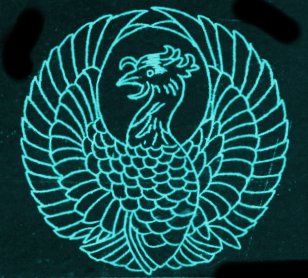 Hil thru Hor |
|
Hos thru I |
|
J thru Kakure-gasa |
|
Kakure-mino thru Ken'yakurei |
|
|
Kesa thru Kodansha |
|
|
Kōgai thru Kuruma |
Kutsuwa thru Mok |
Mom thru N |
3.jpg) O thru Ri |
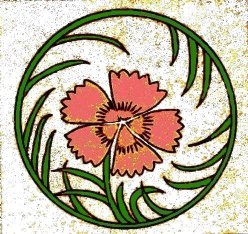 Sekichiku thru Sh |
|
Si thru Tengai |
Tengu thru Tsuzumi |
Yakusha thru Z |
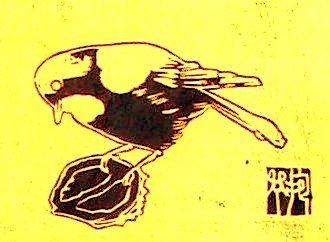
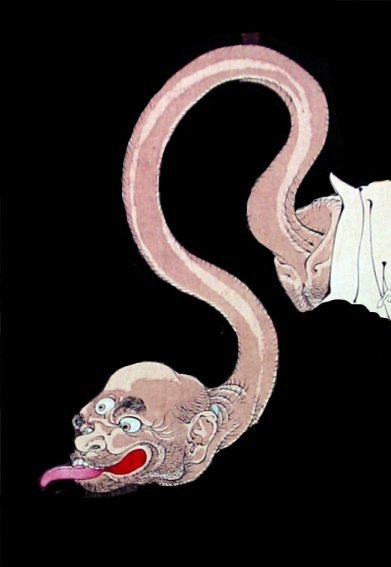
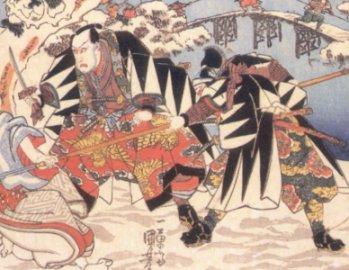
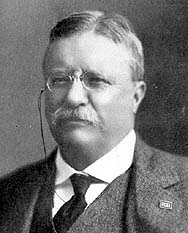
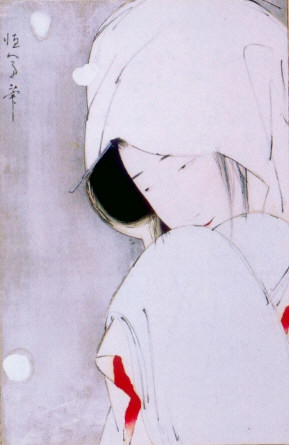
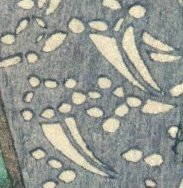
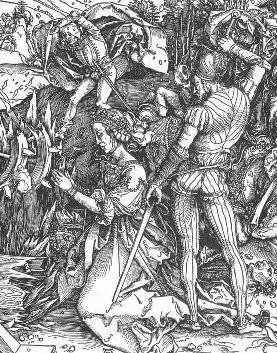
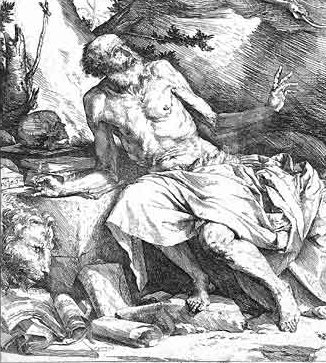
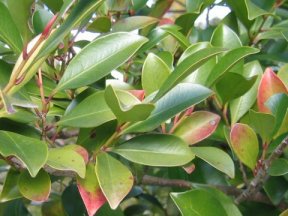
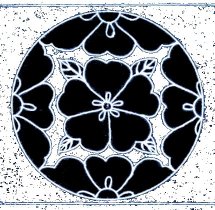
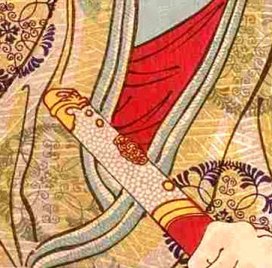
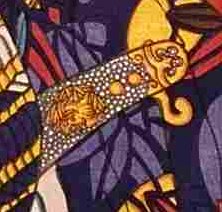

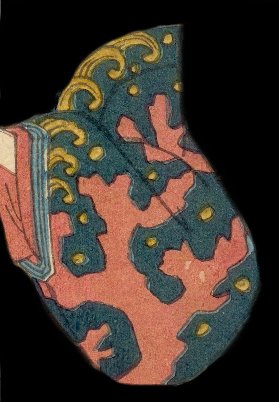
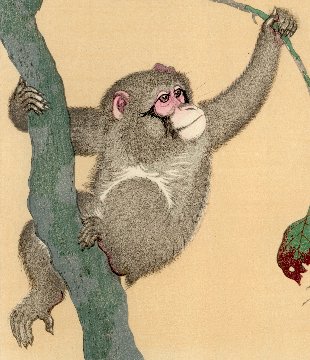
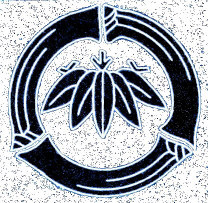
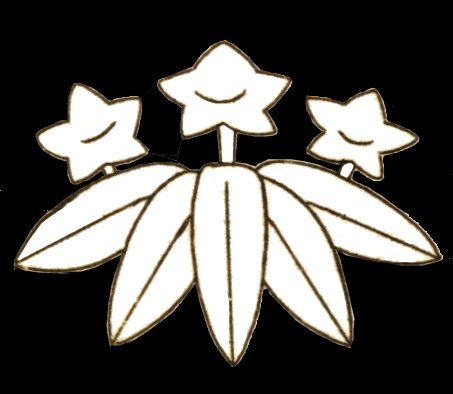
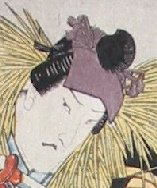
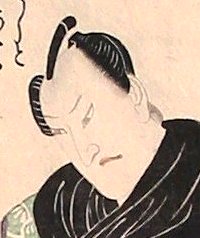
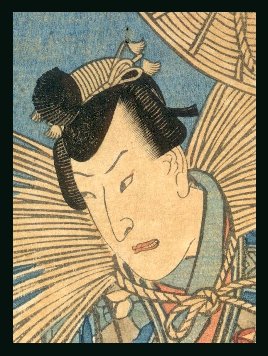
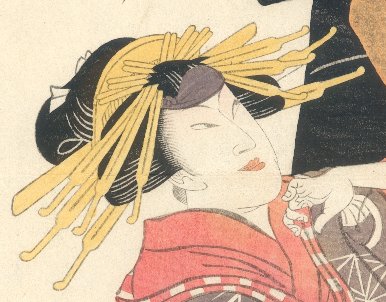
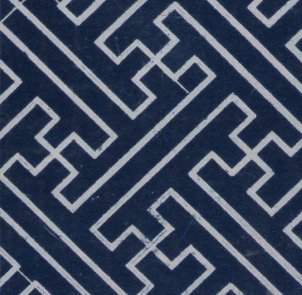
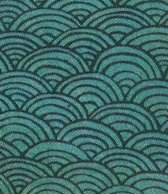
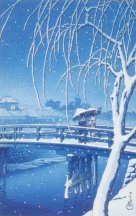
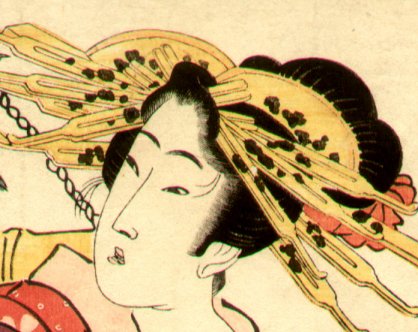


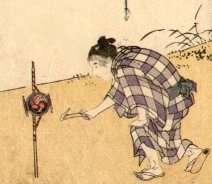
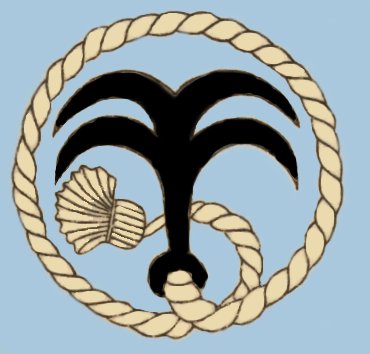
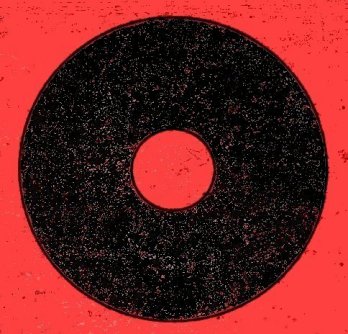
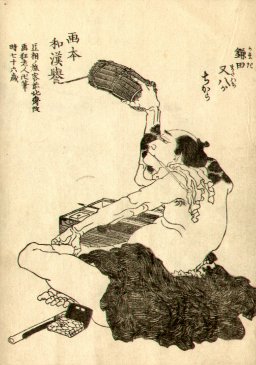
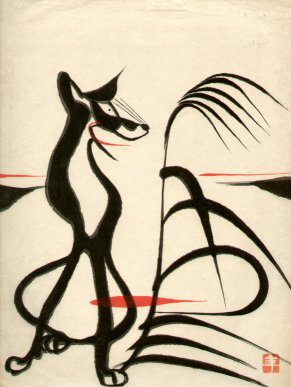
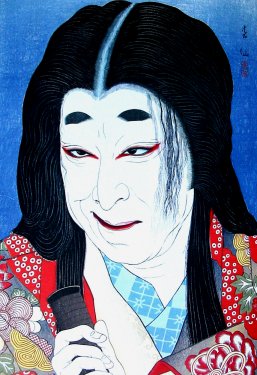
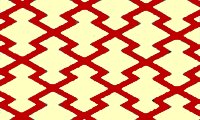
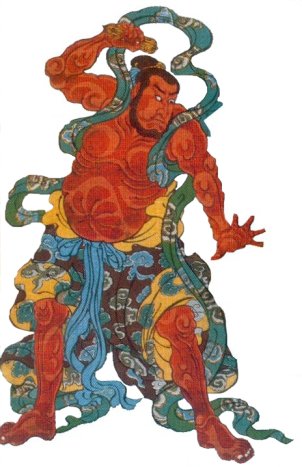
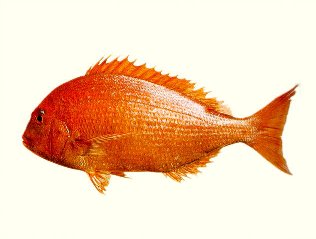
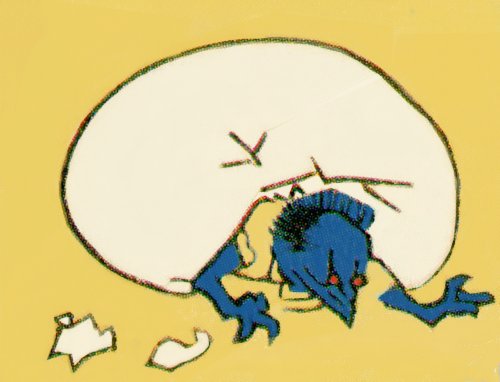
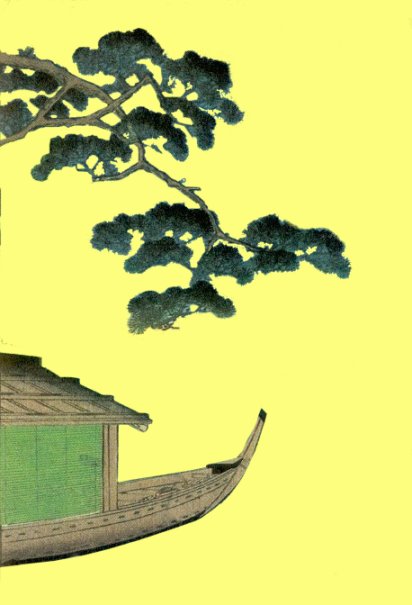
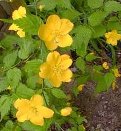
 HOME
HOME